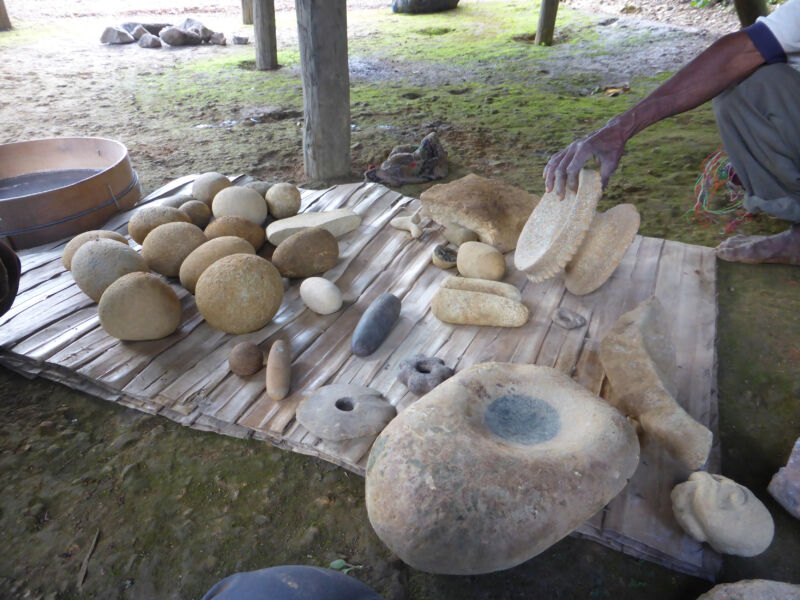New Guinea villagers unearth evidence of the island’s Neolithic past
Ars Technica » Scientific Method 2020-04-07

When people in New Guinea started tending crops like yam and fruits around 8,000 years ago, they transformed nearly everything about life on the island. By around 5,000 years ago, people had begun settling in houses supported by wooden posts. The farmers developed new kinds of cutting tools, and they carved stone pestles to prepare yams, fruits, and nuts. They also wove brightly colored fabrics with dyed fibers, elaborate carved stone figures of birds, and traded across 800km of ocean for obsidian.
The details of daily life were uniquely New Guinea. But the big picture—more people, settled village life, new types of stone tools, and a sudden flourishing of symbolic art—might have been familiar to people from other early agricultural societies around the world. Together, those things are a bundle of cultural trends that archaeologists call Neolithic.
Until recently, archaeologists didn’t think New Guinea had developed its own Neolithic culture. Instead, many researchers thought all the trappings of Neolithic village life had arrived around 3,200 years ago with the Lapita, a group of seafaring farmers who came to the island from Southeast Asia. That’s because the few Neolithic artifacts that could be properly dated all seemed to come from after the Lapita arrived. But the people of the small highland village of Waim recently rewrote that narrative with a chance discovery during a local construction project.